2012 Hop Harvest + Storage Tricks
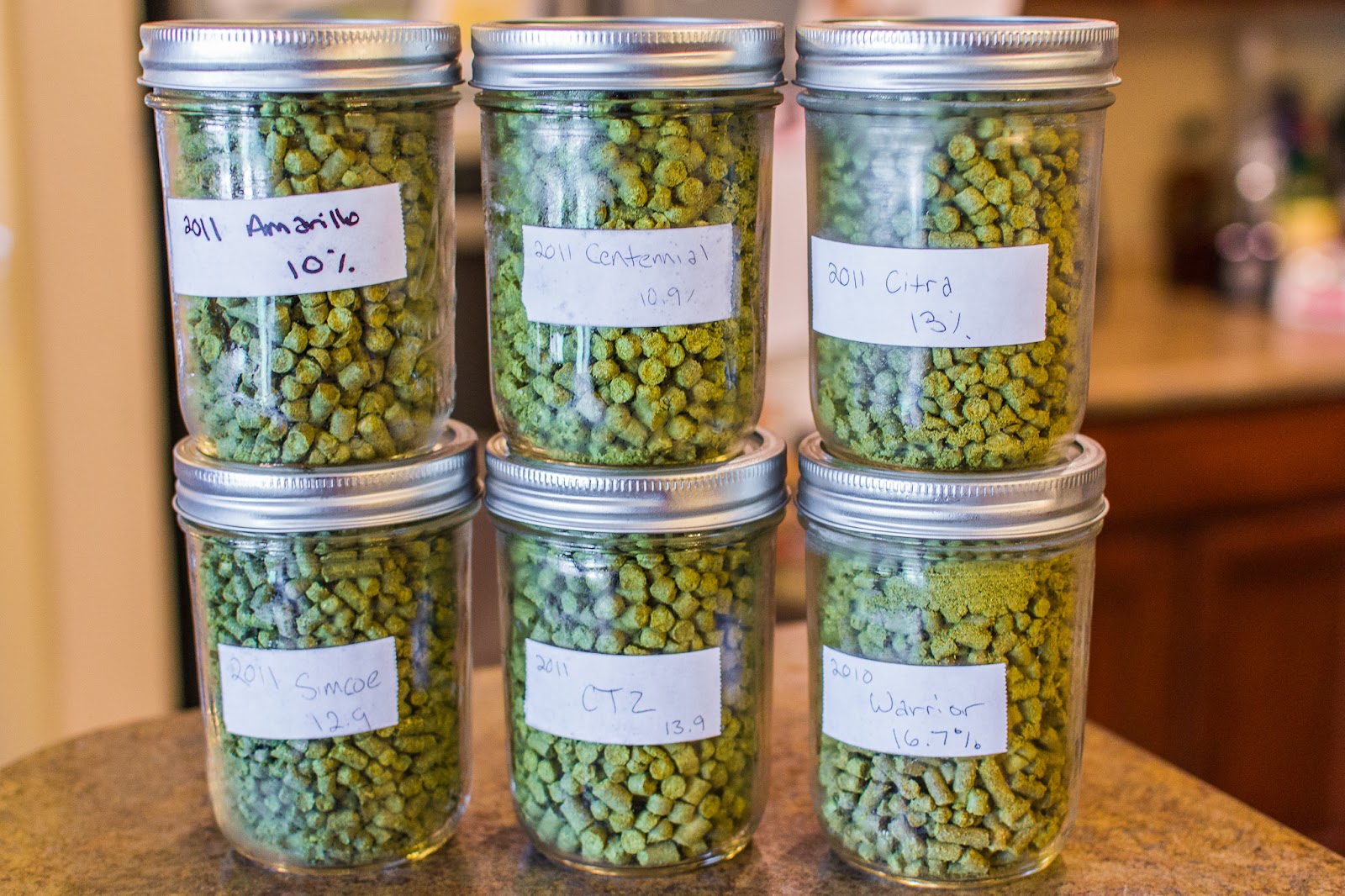
For those that aren’t aware, the hop harvest is here. Over the next month to month and a half, the hop farmers will be harvesting their 2012 crop. Now is the time to buy your hops for the year. I know it can be difficult to predict what you’re going to want or need for the next twelve months, but you’ll get good prices and the freshest hops right now.
Hops Direct, Fresh Hops, and Farmhouse Brewing Supply are three great resources to get bulk hops. If you’re looking for whole cone, Fresh Hops is the best resource. Pellets can be bought from either Hops Direct or Farmhouse, but Hops Direct grows, harvests, kilns, pelletizes, and packages on site. Anticipate a late September release for whole hops, and an October to November release for pellets.
The first hurdle with buying hops in bulk is predicting what you’ll need. Obviously the styles of beer you brew will dictate this. If you brew lots of lagers, you’ll want to buy noble hops, or hops like Liberty, Mt. Hood, and Ultra. If you brew English styles, Golding and Fuggles would be great choices. For American style beers, the sky is the limit, but regardless, consider buying a pound of a clean, neutral bittering hop such as: Magnum, Warrior, Apollo, Summit, or Bravo.
I brew a ton of IPAs, so I generally buy a ton of hops this time of year; somewhere in the neighborhood of eight to ten pounds. I tackle the problem of what to buy and how much with two strategies. First, what’s the total quantity of hops I need? And secondly, how much of each variety? The first question is fairly easy to answer. I open Excel, alongside my brewing logbook, and add up the total amount of hops I used in the past twelve months. That gives me a rough estimate of how many pounds of hops I’ll need this year — 10-12lbs. The second question is much harder to answer. I start with some data entry in Excel. It only takes a few minutes to enter in how much of each hop I need to brew all the beers on my on-deck list. That gives me a good 4 month snapshot of what I’ll need, which I multiply by 3 to get my yearly totals.
Now that you’ve got a bunch of hops, how do we store them? Most hop suppliers ship their hops in nitrogen flushed, vacuum sealed, aluminized-mylar bags, which when thrown in your freezer, are the absolute best storage conditions for hops. Kept like that, hops should have no problem staying fresh for 1-2 years or more. But what do we do once we cut open the bag?
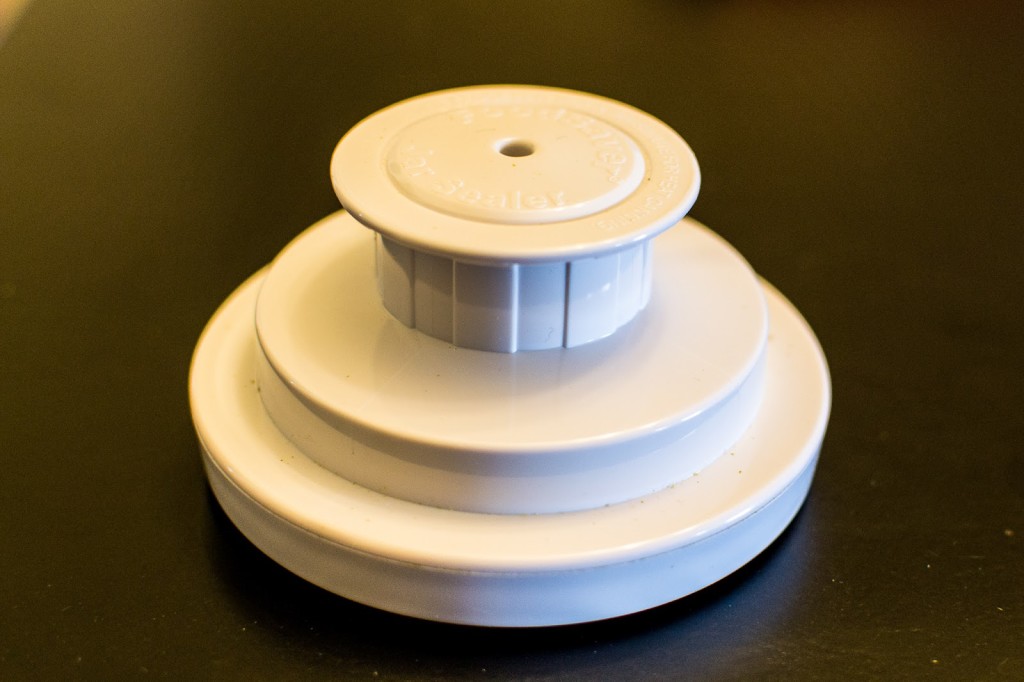 I’ve fiddled around with food saver bags for a couple years now, and while they work well, they are far from ideal. First, They are oxygen permeable. This isn’t a massive concern when the bags are held under vacuum, but a concern it still is. Secondly, you have to make the bags much bigger than needed, so that you have room to cut the bag and re-seal it as hops are used. I’ve found a much better solution in Mason Jars. Pint-size mason jars hold 10oz of pellets, and quart jars hold 20oz. Foodsaver sells a wide-mouth jar sealer allows you to vacuum the air out of the mason jar, while still using the mason jar lid. Even if you don’t have a Foodsaver, a brake bleeder hand pump ($15) will pull just as strong of a vacuum as a Foodsaver does. All you need is the $10 jar sealer attachment.
I’ve fiddled around with food saver bags for a couple years now, and while they work well, they are far from ideal. First, They are oxygen permeable. This isn’t a massive concern when the bags are held under vacuum, but a concern it still is. Secondly, you have to make the bags much bigger than needed, so that you have room to cut the bag and re-seal it as hops are used. I’ve found a much better solution in Mason Jars. Pint-size mason jars hold 10oz of pellets, and quart jars hold 20oz. Foodsaver sells a wide-mouth jar sealer allows you to vacuum the air out of the mason jar, while still using the mason jar lid. Even if you don’t have a Foodsaver, a brake bleeder hand pump ($15) will pull just as strong of a vacuum as a Foodsaver does. All you need is the $10 jar sealer attachment.
I’ll end this post with a few notes about up-and-coming hop varieties. Apollo’s acreage has grown quite a bit in the last year. It has a ridiculously high alpha %, and I’ve heard it has a nice clean bitterness. People are also getting good results using it for late hopping; I’ve heard it has a rather dank profile, reminiscent of Nugget or CTZ. El Dorado hops are also growing in acreage this year. We heard quite a bit about these last year, although they were nigh impossible to find. El Dorado have moderately-high alphas, and allegedly have a fruity, almost candy-like aroma. I’ve heard people call the aroma Jolly Rancher-like. It’s also the only hop I know of with it’s own website and Facebook profile, which cracks me up.
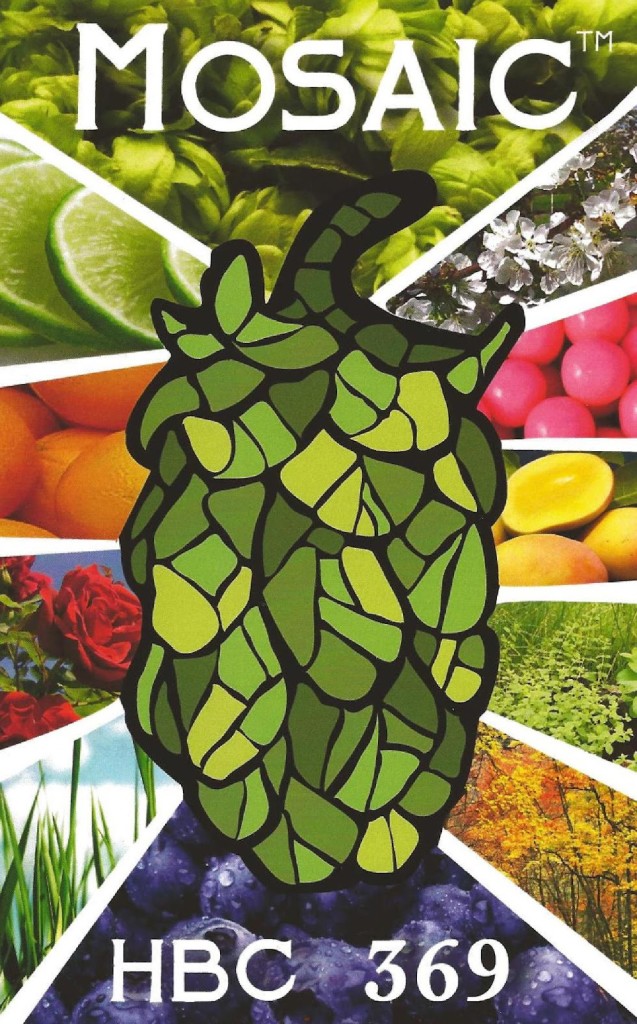 The hop I’m really excited about is Mosaic. Formally known as HBC 369, Mosaic is the new darling hop from the Hop Breeding Company JV (the folks that brought us Citra). Mosaic’s parentage is Nugget, Simcoe, and a few other hops they won’t mention. This hop has been in the experimental phase for a few years, and it’s found it’s way into a number of commercial beers, Ruthless Rye being the most notable. Lots of folks in the hop industry feel that this hop will be the first to truly lessen the demand for Simcoe. It’s been described as smelling much like Simcoe, but with more tropical fruit and less cattiness. Vinnie from Russian River said he picks up a distinct blueberry aroma from it, so it should be interesting. I’ll be buying at least a pound of Mosaic, and I’m definitely looking forward to playing around with it.
The hop I’m really excited about is Mosaic. Formally known as HBC 369, Mosaic is the new darling hop from the Hop Breeding Company JV (the folks that brought us Citra). Mosaic’s parentage is Nugget, Simcoe, and a few other hops they won’t mention. This hop has been in the experimental phase for a few years, and it’s found it’s way into a number of commercial beers, Ruthless Rye being the most notable. Lots of folks in the hop industry feel that this hop will be the first to truly lessen the demand for Simcoe. It’s been described as smelling much like Simcoe, but with more tropical fruit and less cattiness. Vinnie from Russian River said he picks up a distinct blueberry aroma from it, so it should be interesting. I’ll be buying at least a pound of Mosaic, and I’m definitely looking forward to playing around with it.
So again, the next two months or so is your time to stock up on hops. Allegedly the 2012 crop turned out with a good yield, so hopefully some of the hops du jour won’t be as hard to track down this year. I’ll be buying at least a pound each of Amarillo, Apollo, Cascade, Centennial, Citra, CTZ, Mosaic, Simcoe, and maybe 8oz or so of El Dorado. Cheers to a hoppy 2013!
**UPDATE** So I was incorrect in stating that Mosaic was the hop featured in Ruthless Rye, it wasn’t. That hop was actually HBC 366. There isn’t much information about 366 available yet, but here’s what I do know about it. It has an exceptional yield, which should make the growers happy. Alpha acids are very high at 14-17%. Also, the total oil content of this hop is ridicuously high — 2.4-2.7ml of oil per 100g of hop.
I did find a video of Steve Dresler from Sierra Nevada talking about it. He said it’s a pungent oil bomb with lots of citrus and tropical fruit aromas. He did say it can get a bit catty if you use it with a heavy hand.
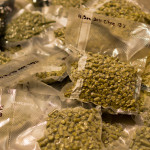


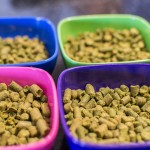
Do you keep the mason jars in the freezer once you have them vacuum sealed?
Yup, you got it.
Thanks for the tip! I'd been trying to find a better way to store 1# hops after opening. I can't fit 20oz in a qt jar but after deducting a few ounces, I can usually fit the rest in a qt jar. https://flic.kr/p/niBuR2
Very nice. Clever use of the labels from the bags too!
A question about the foodsaver product, can you tell which model number the jar version has? In The Netherlands where I live the Foodsaver products are not that easy to find.
How do you open the jars after they have been vacuum sealed?
You've done a good job. Your tips are really helpful. Thanks for the post. I got this by
Best Vacuum Sealer .
When storing nutrient at inhabit temperature you beggary to be reminiscent the food is 10% or devalue in moisture. Maize, for happening, has a higher moisture communication, so I don'tBest Vacuum Sealer it. Chromatic sugar is other content you shouldn't vacuum-seal. It can be moist enough from the molasses for any botulism bacteria that may be comprise to colour into a toxin when in the anaerobic (oxygen-free) nation of a certain jar.
I am hoping that spring comes your way very soon, and you can have your fill of all the yummy asparagus, too!
Thanks for dropping by!
Best Vacuum Sealer
I love my Best Vacuum Sealer sealer; when I asked for it for Christmas a few years ago, my husband thought I was setting some kind on sinister trap, where I would then freak out because he bought me an appliance for Christmas, wah! Instead, I was thrilled and immediately got up from under the tree to go plug it in.
I use my vacuum sealer constantly. I can buy meat at low prices in those huge packages, then come home and separate it into portions we will really use, without worrying about freezer burn. I use it to
This comment has been removed by the author.
Hi Scott,
Is this still how you prefer to store your hops? Or have you found something you like better?
Thanks,
eric